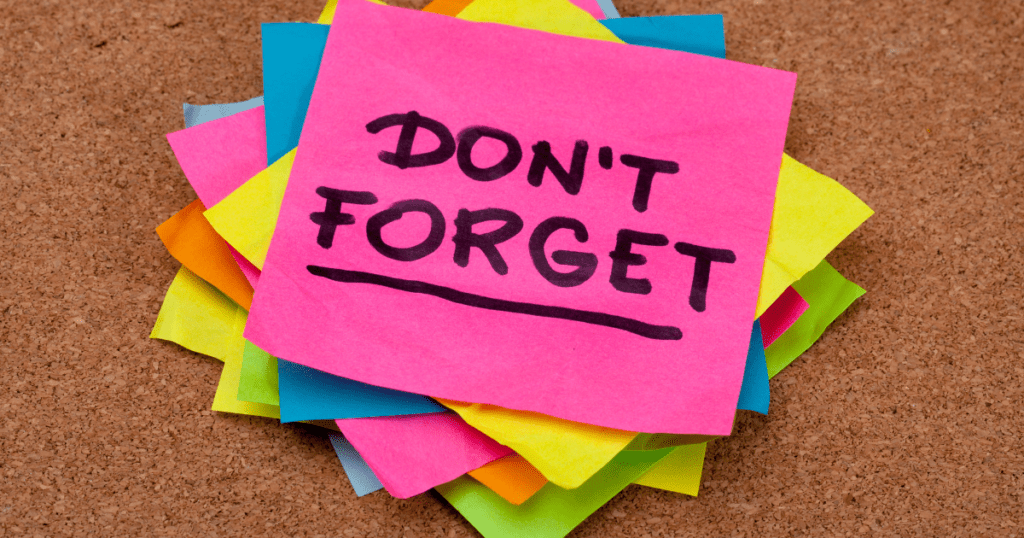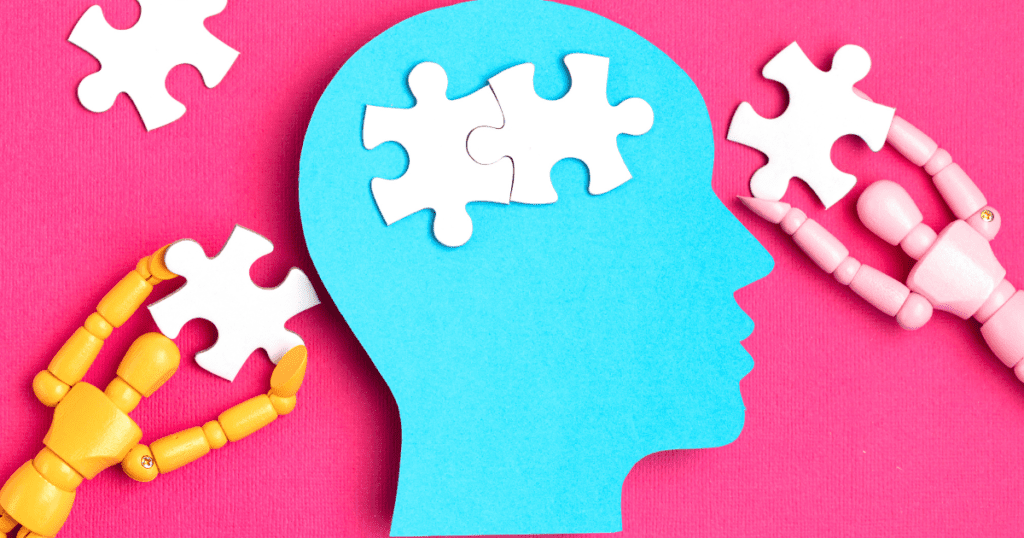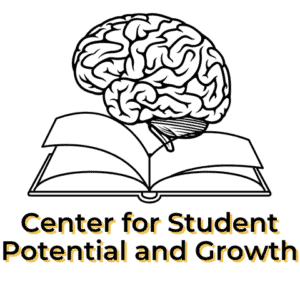
Are you the parent of a child who is having difficulty keeping up and remembering things in school? It may be due to a working memory problem. Working memory plays a vital role in helping children learn information and skills. You can learn about the effects of poor working memory on learning in this post (The Impact of Poor Working Memory on Learning).
So, if your child is struggling with learning—particularly as it pertains to remembering what was taught or making their way through a series of steps—you must understand how this issue can affect learning and what steps you can take to help your child succeed both at home and in the classroom.
This blog post will look more closely into what exactly happens when someone has a working memory problem. We will offer tips on how parents can work with their children (and possibly schools) to ensure they receive the support they need.
What Is a Working Memory Problem?
Working memory is an essential part of the brain’s cognitive system. Working memory helps us remember information quickly, usually just a few seconds. It also helps us complete tasks requiring more than one step, like following instructions or solving math problems.
Working memory is a problem with ongoing difficulty maintaining and using small information units. Someone with a working memory problem may need help holding on to new information or following directions. They also need help recalling facts and details from stories and learning from their mistakes.
Working memory problems result from various factors, such as genetics, developmental or health conditions, stress, or an underlying attention disorder.
There are different components of working memory. Verbal and visual-spatial components contribute to working memory.
Verbal working memory deals with the ability to quickly hold and use oral information. For example, verbal working memory skills are used when telling your daughter what you want her to do.
You want your daughter to clean off the table, take out the trash, and get started on her homework.
If your daughter has good working memory skills, she can remember and follow through with the directions you gave her. If not, she may only clean off the table, forgetting the other two tasks.
Visual-spatial working memory is the ability to hold visual information in mind for immediate use.
For example, your child needs to recall where they put their house keys or homework.
If your child has good visual-spatial memory skills, they can “retrace their steps” to find their keys. If they don’t, they may need help to recall what they did and where they went after coming home (limited visualization ability).
Working memory can affect students’ learning abilities in a variety of ways. Working memory problems can impact essential basic reading and reading comprehension skills. A working memory problem can also impact your child’s math and written expression skills.
Next, we will discuss signs to look out for if you suspect your child may have a working memory problem.
What are the signs of a working memory problem?

If your child has problems with working memory, the signs are typically evident at home and school. Common signs that a working memory problem exists are:
- Needing repeated reminders
- Having a hard time remembering what you said
- Difficulty with recalling multiple steps
- Difficulty with comprehending what they have read
- Raising their hand and forgetting the answer after being called on
- Having a hard time taking notes and listening to the teacher
- Challenges with following directions as stated
- Seeming spacey or absent-minded
- Challenges with mental math
- Having a hard time completing tasks
- Challenges with coming up with cohesive written work
I can tell you from personal experience it’s challenging when your child has a working memory issue.
I used to buy my son two lunch boxes in kindergarten because he would frequently leave his lunch box at school. I would have a backup lunchbox for his lunches to get at least one of them back every other day.
This was the same with hats, gloves, and other miscellaneous things. At first, I felt like I was losing my mind! But after the first several months of school, I knew I needed to do something different.
Even now, I have strategies for his working memory limits. After years of practice, I better understand how his brain works (and how I can support him).
You may notice your child needs more help than you would expect him to need at his age. And depending on the severity of the problem, it can be frustrating for you and your child. I’m here to tell you that it can get better!
The good thing is there are ways to help your child work around their working memory problem.
How Can I Support My Child if Their Working Memory Problem Affects Them at Home or School?

Parents can support working memory at home by chunking information. You can also teach memory rehearsal strategies and have them practice what they need to know. Using technology can help store information they will need later.
The support your child gets at school depends on how much your child’s working memory skills impact their school work.
Let’s dig into each of these strategies a bit further.
1. Reduce working memory loads by chunking information.
Think of working memory as a small pail. This pail can only hold so much inside. The more things you put in the pail, the harder it is for your child to carry. If you continue adding items to the top of the pail, the pail overflows, and the extra things fall out (don’t get remembered).
If you only add a little to the pail, the load is more manageable for your child.
The less work your child’s brain has to do to remember steps or tasks, the more brain “space” your child has for the job.
Let me share a scenario that has played out plenty of times at my house:
My son and I walk in the door after picking him up from school. The trash still needs to be taken out; his basketball shoes are cluttering the entranceway, and he has homework and chores.
As we walk in the door, I tell him everything he needs to do. It usually goes something like this “Cash, before you head to the refrigerator, I need you to take out the trash, take your shoes to your room, bring those dirty dishes to the kitchen, and you still need to finish cleaning your bathroom. Make sure you study for the test you have tomorrow too!”
I take care of things I need to do and walk back by the front door 30 minutes later. The shoes are still there. I walk by my son’s room; dishes are still on his desk and bed!
He’s done about half of what I’ve asked him to. Depending on the day, I used to fuss at him, and I felt like a drill sergeant as I watched him work through the rest of the tasks. In full transparency, I am constantly adjusting my expectations to match his development. It’s a work in progress.
I used to get so frustrated because it seemed like he was being disobedient! Over time, I learned that his mind could only hold on to a few things at a time, so I stopped overwhelming him with information. I waited until I had his attention to give him directions. I also avoided times when I knew he was focused on something else (in this case, heading to the cabinets and refrigerator for an after-school snack).
If you can relate to this scenario, try a similar approach. Limit the amount of information you give your child at a time. Don’t overwhelm them! You may find this makes both of you frustrated.
Give them two tasks and tell them to let you know when they’re done. Then when you see they have done the first two tasks, give them two more. I know this takes more time, but it will save you both frustration and time in the long run.
Another way to reduce the working memory load is by posting visual aids of common steps and rules where your child can see them.
At home, this may look like having a list of steps for a clean bedroom posted on the wall. Your child doesn’t have to remember everything they need to do; they can focus on doing a good job working on each task.
It could also look like your child have steps to compute a long division problem at their desk during a test at school. Your child doesn’t have to strain to remember the actions and can work on mastering the computation of long division.
The goal is to reduce your child’s working memory load so they can complete tasks.
2. Teach your child ways to rehearse information.
We can teach students to rehearse information they want to remember by talking aloud to themselves (verbal rehearsal). We also teach rehearsal using visualization strategies.
Verbal rehearsal is something that we do naturally. For example, when someone gives us their phone number, and we don’t have paper and pencil, we say it out loud several times until we can find something to write it down. If someone sees us while we are in the middle of verbal rehearsal, they usually ask us if we are “talking to ourselves.”
Building Working Memory Using Verbal Rehearsal
Verbal rehearsal helps when remembering something, like taking notes during class.
When I give the verbal working memory test to students, I notice some students will repeat the series of numbers under their breath. Other students will trace the numbers with their fingers in the air or move their heads as they “trace” the numbers with their heads. Interestingly, this helps some students remember.
Building Working Memory Using Visualization
Visualization strategies can be fun to teach your child how to boost their working memory.
Visualization is making a mental image of the information you want to remember. You can visualize best when using a multi-sensory approach.
When we teach visualization to our kids, it can be a powerful tool in their learning toolbox.
In the example above, I discussed recalling the steps for a long division problem.
Dividing involves breaking large numbers apart into smaller groups. A mental representation of this could be having your child imagine a class pizza party.
Your child can visualize each class member getting three slices of cheese pizza. There are 30 pieces of pizza and ten children in their class, and they can recreate this story in their minds (with your help, of course).
Add manipulatives such as toy pizzas or create pizzas from construction paper together to add more depth to this visualization exercise.
If your child can learn to visualize the steps they took to ensure each student got three slices of pizza, they can also use this with other subjects!
3. Have your child practice the information they need to remember.
We have all heard the adage that “practice makes perfect.”
But we know that “proper practice makes perfect!” Students who practice the info they need for tests and quizzes rely less on their working memory, and the more they practice, the less their working memory is strained.
From there, information becomes stored in their long-term memory bank.
The repeated practice works best for information like math facts or historical dates. They will gradually become better at remembering if you help your child with drills on tasks like these.
It is important to remember that a child with working memory problems will need to practice more.
Remember the pail analogy at the beginning of this section. The pail can only hold so much, and be mindful of this when helping your child practice consistently.
4. Support working memory problems with technology.
I was reluctant to add technology to this list because our children are constantly plugged into tech. But it would be irresponsible of me to leave this out. Many children and teens use technology responsibly.
Tech apps can help your child remember information and trigger their memory (like an alarm that reminds them to pack their bookbag).
Google has a wide variety of apps that can assist your child with their memory. Some apps help your child remember homework assignments, organize their schedule, and take notes.
Here is a list of a few apps you may want to check out that support working memory:
Google Calendar (Chrome extension)
Google Keep (Chrome Extension)
Awesome Note 2 (Apple app store)
With any of the strategies I shared, it is essential to remember that you will need to be patient. It may take time for them to learn and get familiar with the tools and techniques.
Are treatments available to help with a working memory problem?

While I have not come across research about any treatment that definitively boosts working memory, most treatment information points to adjusting and modifying our environments with routines and tools.
Companies like Cogmed, Elevate, and Lumosity has created brain games targeting working memory.
A common complaint about brain training games is that working memory improves over time with game-related tasks. But working memory only improves so much across other settings.
Several studies show that brain training does not improve working memory across settings.
I’ve seen recommendations that exercise can help boost working memory, and I might be biased because I love to exercise. Yet, several studies show that gains in working memory after exercise improved on post-tests on the working memory test battery used in that study.
As a parent, it is essential to understand what issues your child’s working memory problems are causing. From there, find a strategy that both of you can stick with.
How do you diagnose working memory problems in children?

If you suspect your child has a working memory problem, you can have them evaluated.
Working memory is a cognitive function, and we can test cognitive functions directly.
A comprehensive evaluation should include direct cognitive ability tests and other executive functioning skills. Other essential data include parent, teacher, and self-reports (when age appropriate). Classroom observations, a clinical history, and developmental interviews are also important.
An evaluation will assist you with knowing your child’s working memory profile. An assessment should include suggestions about how you can support your child at home. The evaluation should consist of recommendations to help your child at school.
Conclusion
In conclusion, working memory is essential to the brain’s cognitive system. It plays a huge role in learning and day-to-day life. If your child has significant issues with working memory, there are some strategies and practices you can do to help support it at home and school. And although we don’t have definitive research about treatment for boosting working memory, making adjustments at home may be beneficial for helping your child with managing information. If concerns persist and you suspect your child has a learning disability related to their working memory, seek out professionals who can accurately diagnose and provide advice on providing the best learning environment. If you ever feel overwhelmed during this process or need extra guidance, feel free to reach out; we are here to help.
How the Center for Student Potential and Growth Can Help
If you suspect your child’s working memory is due to a learning disability, we can help. An independent educational evaluation can identify specific learning strengths and weaknesses.
We provide independent educational evaluations for any age learner in Ohio.
To learn more about scheduling an evaluation, call us at 216-273-6020. You can also email us at info@potentialandgrowth.com.
